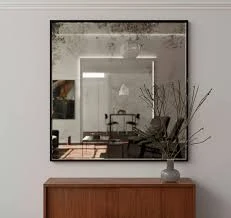

The Advantages of Tempered Glass Wall Panels
In the modern architectural landscape, tempered glass wall panels have emerged as a favored choice for both residential and commercial spaces. These panels not only elevate the aesthetic appeal of buildings but also offer a range of functional benefits that make them an ideal material for contemporary design. This article explores the key advantages of tempered glass wall panels and why they have become a popular choice among architects and designers.
First and foremost, tempered glass is known for its remarkable strength and durability. During the tempering process, glass is heated to a high temperature and then rapidly cooled, which enhances its mechanical properties. As a result, tempered glass wall panels are significantly more resistant to impact than standard glass. This strength is particularly important in areas subject to high winds, falling debris, or even accidental impacts. For building owners and architects, this means enhanced safety for occupants and reduced costs related to maintenance and replacements.
In addition to their strength, tempered glass wall panels also provide excellent thermal insulation. They help regulate indoor temperatures by minimizing heat transfer, which can lead to energy savings. By using double or triple glazing techniques, where multiple layers of glass are separated by inert gas, these panels can significantly reduce heating and cooling costs in buildings. This energy efficiency not only benefits the environment but can also enhance a building’s sustainability credentials, making it an attractive option for eco-conscious consumers and developers.

Another compelling advantage of tempered glass wall panels is their aesthetic appeal. The transparency and sleekness of glass can create an open and airy feel within a space, allowing for natural light to permeate interiors. This can make small areas appear larger and more inviting, fostering a comfortable atmosphere. Furthermore, tempered glass can be customized in a variety of finishes, tints, and patterns, allowing architects to incorporate unique design elements that suit the overall aesthetic vision of a project. From elegant office buildings to modern homes, the versatility of glass enables designers to create stunning visual impacts.
Moreover, tempered glass wall panels can enhance the acoustics of a space. When combined with proper framing and sealing, these panels can effectively minimize sound transmission, making them an excellent choice for offices, conference rooms, and other locations where noise reduction is essential. In a time when workspaces are evolving into more collaborative environments, creating quiet zones without sacrificing visibility becomes crucial for productivity.
Safety is another critical aspect of tempered glass. In the rare event that a panel shatters, tempered glass breaks into small, blunt pieces rather than sharp shards, which reduces the risk of serious injury. This characteristic makes it a preferred choice for high-traffic areas, public buildings, and homes with children or pets.
In conclusion, tempered glass wall panels stand out as a premium choice in modern architecture due to their strength, energy efficiency, aesthetic versatility, sound insulation properties, and safety features. As building designs continue to focus on blending functionality with style, tempered glass walls offer a solution that meets the demands of today’s world. With ongoing advancements in glass technology, we can expect even more innovative applications of tempered glass in the future, further solidifying its role as a cornerstone of contemporary design. Whether for residential or commercial use, investing in tempered glass wall panels is investing in quality, safety, and elegance.